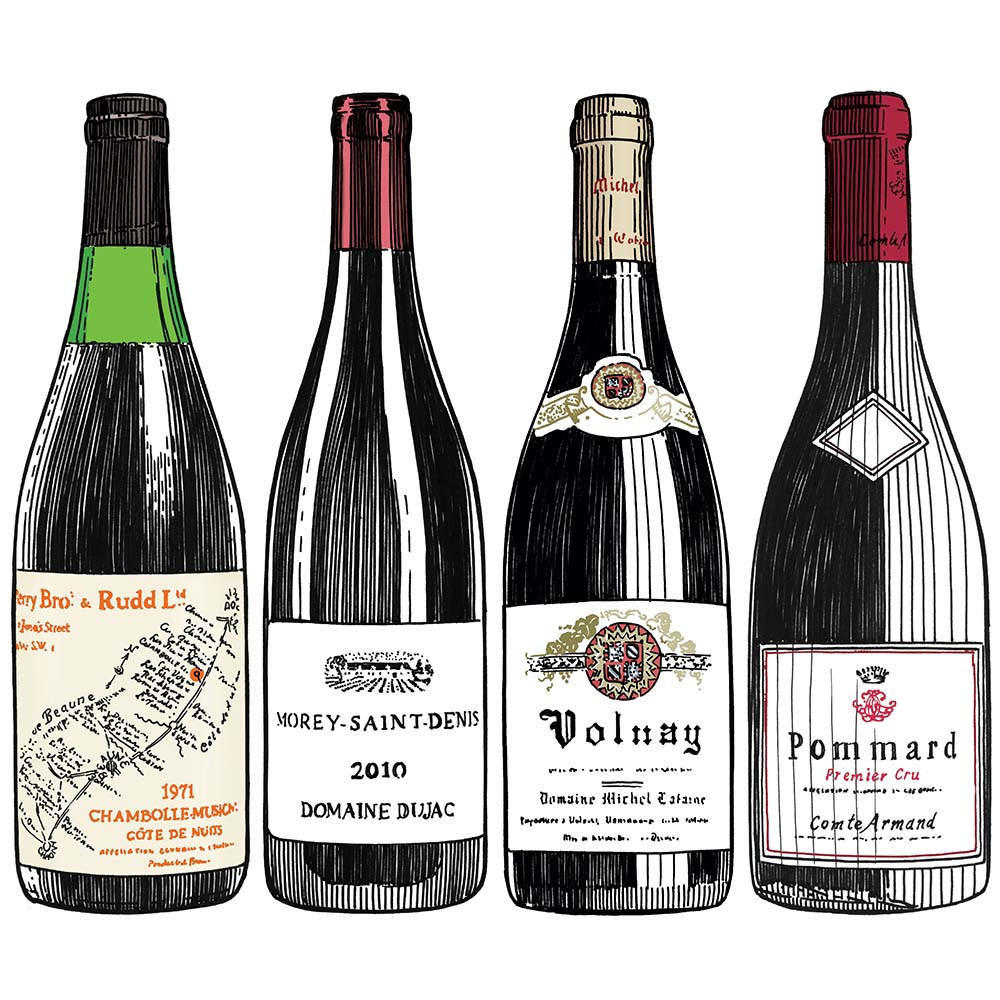How not to collect Burgundy
Author: Charlie Geoghegan

Many of our colleagues are avid collectors of Burgundy. But they’ve also made their fair share of mistakes along the way. Here, they open up about some of the things they’d do differently if they were to start all over again.
Spend any amount of time in a Berry Bros. & Rudd office and it’ll become clear that many of our colleagues genuinely love the wines of Burgundy. Their day job might be to buy, sell or talk about these wines, but it runs deeper than that. These are knowledgeable people, naturally, but they’re also passionate collectors. Some have enviable Burgundy cellars, built up over many years; others are just getting started.
We asked them to share their mistakes, their regrets and, most importantly, their advice to anybody looking to get started with collecting Burgundy.
Look beyond the big names
“I wish I had tasted outside of the more established appellations sooner,” says Will Wrightson from our London office. “And then to have bought what I liked, and not slavishly chased the bigger names. This, I think, is where the story is now: the up-and-coming areas with serious exciting producers working the land.”
This chimes with the view of Mark Pardoe MW, our Wine Director and an advocate for the quality of Burgundy’s less-celebrated communes. “The best wines from these ‘other’ appellations can easily match many wines from the more famous villages,” he argues. “This is especially so at the village level, but even, on occasion, with some of the Premiers Crus.”
Listen to the whole album
Alex Harrison is based in our Tokyo office. His biggest regret is not looking deep enough into a producer’s range. “I now buy a broader range from individual producers, rather than just picking up cases of my favourite wines each year,” he explains.
“For me, drinking just the one wine from a producer is like only listening to the hit single and ignoring the rest of the album. It might be the one you come back to the most, but sometimes it’s more enjoyable to take a step back and enjoy the bigger picture, the full expression of a person’s work. As your tastes evolve, some of those wines might develop into new favourites that would otherwise have been overlooked.”
There is also a practical benefit to buying more widely from your favourite producers, says Martyn Rolph from our Commercial team. When wines are in scarce supply, we allocate them to those customers that have supported a given producer in the past.
“Ultimately, we want to spread high-demand wines as widely as possible,” Martyn writes on bbr.com, “but it’s important that customers buy a range of wines – not just the big names. This support of growers across the region is essential. It’s much more difficult for us to help customers who only want a single, in-demand case.”
Don’t follow hype
“It’s easy to get caught up with trendy producers or the next big thing,” says Account Manager Tatiana Humphreys. “But lots of producers fly under the radar, making sensational wines without the hefty price tags.”
David Jones, also a London-based Account Manager, believes that the sometimes-overlooked generic-level wines are a lot more age-worthy than they are often given credit for. “Lay down more Bourgogne-level reds and whites,” he suggests. “Two or three years after release, they can develop to offer delicious drinking. From the best vintages and best producers, they have the potential to age even further.”
Don’t overlook Chablis
Both Tatiana and David believe that Chablis is overlooked – and undervalued as a result. “I often forget about Chablis,” says Tatiana. “A Premier Cru from an excellent producer like Duplessis or Eleni et Edouard Vocoret will cost you a fraction of a white Premier Cru from the Côte de Beaune. Don’t bypass Chablis.”
“I regret not laying down more Grand Cru Chablis,” says David. “It has become more widely appreciated recently, but for some time I wasn’t aware of just how deliciously intriguing mature Chablis can be. These wines can rival famous names from the Côte de Beaune yet come at comparatively very attractive prices. Fortunately, it’s not too late: you can still find strong value from the best Premiers and Grands Crus, given the quality and potential they offer.”
Adam Bruntlett, our Burgundy Buyer, agrees. “Despite growing interest and outstanding quality, the prices here remain remarkably reasonable,” he says. He points in particular to the high quality of Chablis in 2020. “The wines are perfectly proportioned, with succulent citrus and white stone-fruit, and a firm backbone of bracing acidity. The ’20 vintage in Chablis is a true classic.”
Buying at release
The annual Burgundy En Primeur release is a highlight of the fine-wine calendar. Buying at release has various benefits, and in some cases is the only opportunity to secure certain wines. “I regret not buying enough at release,” says Hugo Thompson from our New York office. “I was so focused on Bordeaux at the start of my wine-collecting journey that I ignored Burgundy. With hindsight, it’s relatively easy to buy mature Bordeaux. But with Burgundy in such short supply, it quickly becomes a scarce commodity.”
Jose Lau from our Hong Kong office thinks along similar lines, noting another practical consideration: rising prices after release. “When I compare the release prices with what these wines often sell for a few years later, I often regret not picking up more,” he says.
Our Burgundy 2020 En Primeur offer is now live. Find out more about collecting wine at bbr.com


